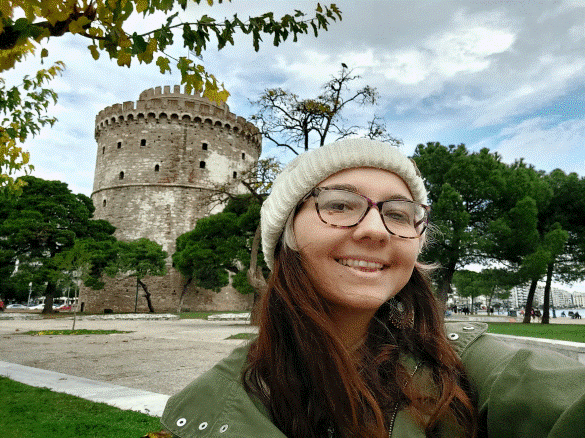Conference and publication success for Cohort 1 student Romana Burgess
Congratulations to final year CDT student Romana Burgess on her winter of academic achievements.

In December 2022 Romana presented her paper 'A quantitative comparison of manual vs. automated facial coding using real life observations of fathers' at EAI PervasiveHealth 2022, the 16th EAI International Conference on Pervasive Computing Technologies for Healthcare. The conference was concerned with the intersection between technology and healthcare, and covered topics such as wearable devices for tracking and monitoring, activity and gesture recognition, and human-centred design for healthcare solutions.
Romana's paper presented a validation study on a facial classification software, which was used to classify fathers' facial expressions during interactions with their infants. Romana's team evaluated whether the computational classification was comparable to that of a human coder. The paper is due to be published in the conference proceedings in the coming weeks.
To add to Romana's success, she is the lead author of the paper 'A Quantitative Evaluation of Thin Slice Sampling for Parent–Infant Interactions' which was published in the Journal of Nonverbal Behavior in January 2023.
Romana's summary of the paper:
Broadly, the paper looks at whether we can use brief observations (“thin slices”) of behaviours to approximate those same behaviours over a longer period of time.The purpose of this work is to find an approach to alleviate the “coding burden”, i.e., the amount of time that researchers spend coding behaviours from observational data. In essence, behavioural coding is extremely time-intensive and laborious, and this paper both explores and quantifies the value of thin slice sampling as an alternative approach.
The analysis is based on video data of interactions between parents and their infants. These data come from two cohort studies: the Avon Longitudinal Study of Parents and Children (ALSPAC) – based in Bristol –and Grown in Wales (GiW) – based in Cardiff. Some videos were recorded in a research clinic, but most were recorded in the participants own homes.
The videos were coded in 5-minute segments for a large range of behaviours, for example, vocalisations, facial expressions, and body orientation. Then, I used Markov modelling to quantify long-term patterns and transitions between behaviours for 15 distinct thin slices of the full 5-minute interactions, and I compared measures drawn from the full sessions to those from shorter slices.
The paper identified many instances where thin slice sampling was an appropriate coding approach, although there was significant variation across behaviours. From here, I was able toquantify how long is appropriate to code for each behaviour, depending on video context and individual research objectives.
